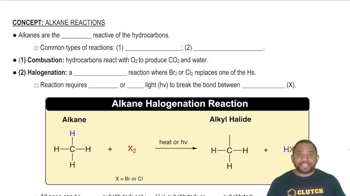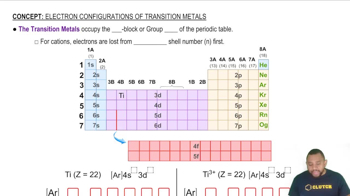Textbook Question
Consider the elements C, Se, B, Sn, and Cl. Identify which of these elements:
e. Forms a hydride with the empirical formula

 Verified step by step guidance
Verified step by step guidance



Consider the elements C, Se, B, Sn, and Cl. Identify which of these elements:
e. Forms a hydride with the empirical formula
Consider the elements N, Si, Al, S, and F. Identify which of these elements:
c. Is a semiconductor
GeCl4 reacts with Cl- to give GeCl62-, but CCl4 does not react with excess Cl-. Explain.
Complete and balance the equation for each of the following reactions.
d.
Compare some of the physical properties of H2S, NaH, and PdHx.
Identify the group 3A element that best fits each of the following descriptions.
(c) Is extremely toxic